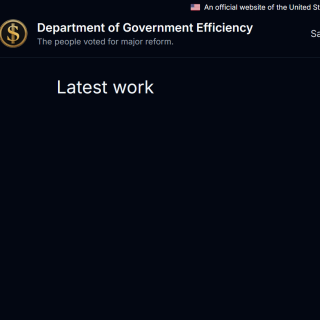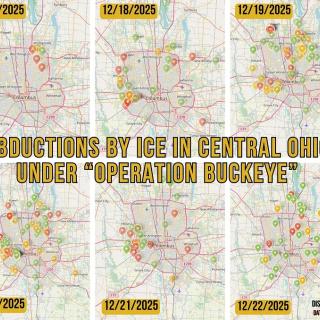Columbus mayoral candidate Andy Ginther in his latest commercial hails the local economy as one of the “strongest in the Midwest.” Last month the consumer-focused website Nerd Wallet crunched the numbers of 100 cities and declared Columbus was the third best city to find a job in 2015.
The regional economy since the 1990s has held relatively strong for some, as Columbus remains a paradise for super wealthy 50-year-old white guys because there are so many world-class golf courses with accompanying caddies to lug their clubs around. That’s the snarky jest which has circulated through local country clubs for years. But for the rest of Columbus, a recent wave of data scrutinizing the regional economy is telling a different story and it’s no laughing matter.
The annual State of Poverty report by the Ohio Association of Community Action Agencies (OACAA), a group of private non-profits that work to alleviate poverty, found that, between the years 2000 to 2012, central Ohio experienced the state’s fastest growth rates for poverty. Up 68 percent in urban Columbus, and up 126 percent in suburban Central Ohio.
These percentages are not based on the federal poverty level but on what the OACAA calls the “Self Sufficiency Standard.” A measurement that not only accounts for housing and food, but also child care and transportation, and how high a household’s income has to be to afford these necessities without needing public assistance. For a family of two adults and two school-aged children, the annual household income needed for self-sufficiency is $46,700.
The State of Poverty report offered other indicators suggesting the improving local job market may not see the improvement many are hoping for. Seven out of every 10 Ohio college graduates from the year 2012 started their working life with an average student debt of nearly $30,000. Nearly half of Ohio households lack the liquid assets, such as a savings account, to keep them out of poverty for only three months following a job loss or illness. And over the past 12 years, poverty has grown in Ohio suburbs the fastest, twice as fast compared to the largest urban areas.
One question the left-leaning think-tank Policy Matters Ohio has wanted to know is, “How did so many people end up on the brink of financial disaster?” One significant reason is “the 24-hour, low-wage economy,” says Wendy Patton, senior project manager for Policy Matters Ohio (PMO).
“Our economy is not producing jobs that allow people to pay their bills and make ends meet,” says Patton. “Thousands of people who work for our largest companies rely on Medicaid, food assistance, because their paychecks are so small and because they don’t get benefits.”
According to recent research by Patton of PMO’s Columbus office, 11 out of the state’s 12 largest job categories does not pay a full-time wage high enough for a single parent with two young children to be self-sufficient under poverty standards set by the federal government. This means they would be eligible for most public assistance.
The 12 largest job categories in Ohio account for an estimated 1.4 million total jobs. Nearly all of the 12 job categories, such as customer service and office work, are considered service sector.
“This was the first time we realized how large the low-wage economy is,” says Paton.
Because of the low-wage economy, public assistance has become critical to the well-being of many families, especially single mothers who work full time. The cost of infant care at a facility averages $8,000 a year. Single mothers making less than the federal standard of poverty are eligible for childcare assistance, what PMO likes to call “work support” assistance. Meaning this particular public subsidy is necessary so the single parent can be able to work.
But now work support funding is under the scope within the Ohio state legislature, as is often the case when under Republican control, and such funding could soon be under the knife.
“There are six different committees, or initiatives, or offices, that have been set up to examine how to help people work and get off public assistance,” says Patton. “Now we, of course, applaud helping people to find work, but we worry about reducing public assistance because in many cases this is what enables people to work. You gotta think twice before you (cut funding) to child care.”
Gov. John Kasich has proposed changes in the next state budget to the child care subsidy by allowing parents at the highest threshold of income to not entirely lose their subsidy if they were to earn a raise. But Kasich has made cuts to child care before, back in 2011, for instance, when many child care facilities saw a seven percent cut in state funding.
In what has to be a sign of the times, the Women’s Fund of the Greater Cincinnati Foundation told Patton that Horseshoe Casinos, with casinos in Cincinnati and Cleveland, had created a new position in human resources. A position tasked to help low-wage employees learn how to acquire public subsidies so they could make ends meet, and thus make it to their casino job every day.
Patton says some of the state’s largest employers, such as Wal-Mart, are telling community leaders and activists they too are concerned about any cuts to public subsidies. Keep in mind the hourly wage of four of the six Walton heirs, the family that owns Wal-Mart, is roughly $450,000.
“Wal-Mart and others are telling people,” says Patton in all seriousness, “that reducing public assistance would hurt working Ohio families.”
Patton adds, “Someone who works, does all the right things, and plays by the rules, should be able to make ends meet.”



